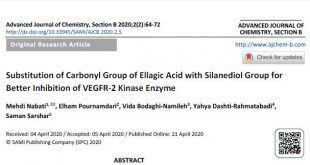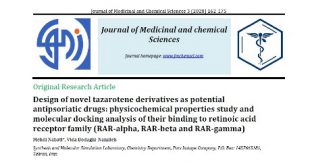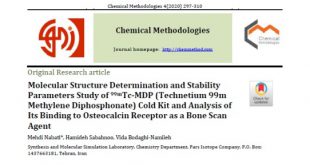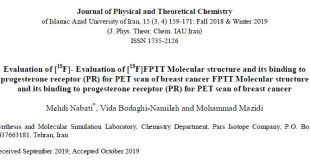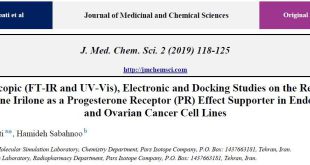Withaferin A (WIT) interaction with β–Tubulin
Withaferin A (WIT)
Withaferin A (WIT) is an important natural compound extracted from the Indian medicinal plant Withania somnifera. This plant has been used for over 3000 years in Unani Indian medical system. Also, its extracted medicinal compound has been in ayurvedic medicine and has multiple pharmacological activities containing immune-modulatory, anti-diabetic, cardioprotective, anti-inflammatory, anti-metastasis, anti-angiogenesis and anti-carcinogenic properties.
The several active groups, such as hydroxyl, epoxide ring, carbonyl, double bond and lactone ring are in the molecular structure of WIT. These active groups cause strong interactions of the molecule with amino acid residues of different targets, such as Vimentin, IκB kinase β (IKKβ), Annexin II and N-terminus of heat shock protein 90 (HSP90).
Withaferin A mechanism
Recently, the researchers have found out the anti-carcinogenic properties of the title medicinal compound is due to its interaction with beta Tubulin. In 2014, Antony and his coworkers reported that WIT inhibits β-Tubulin (the major component of the eukaryotic cytoskeleton) activity. They predicted this ligand-receptor complex formation is done via WIT binding to Cys [303] of Beta-Tubulin.
In 2019, Gianhong Yang et al. conducted an in-depth study of the interactions between WIT and Tubulin. Their studies showed that the molecule under study forms covalent bonds with residues Cys [303] and Cys [239] of the protein. Unfortunately, they did not provide much information about the exact structural and molecular drug-receptor interactions, such as hydrogen bond, ionic and steric interactions.
New research on Withaferin A mechanism
In 2020, Dr. Mehdi Nabati and Dr. Elham Pournamdari studied the physico-chemical, structural and electronic properties of Withaferin A (WIT). Electronic properties prediction of the molecule was carried out using the quantum mechanical (QM) computations. The molecular structure was optimized at B3LYP/6-311++G(d,p) level of theory. The frontier molecular orbitals (HOMO and LUMO) energies were used to calculation of the global reactivity indices. WIT is stable against the oxidizing agents in the cell and has low reactivity against the biomolecules. Evaluation of the intramolecular bonds between the molecule and the receptor indicates the main role of the β-Tubulin residues containing Tyr 224, Cys 12, Gln 11, Asn 101, Gly 143, Gln 15, Gly 144, Asn 206, Gly 142, and Asp 179 in the ligand-receptor complex formation. From the molecular analysis data, formation of the ligand-receptor complex was mainly done by the steric interactions. Finally, the ADME study showed the said compound is non-toxic and has oral bioavailability.
For more information about Withaferin A (WIT) interaction with β–Tubulin, please read the following article:
Withaferin A (WIT) interaction with β–Tubulin to promote tubulin degradation: An in silico study
 Iranian Chemist شیمیدان ایرانی
Iranian Chemist شیمیدان ایرانی
